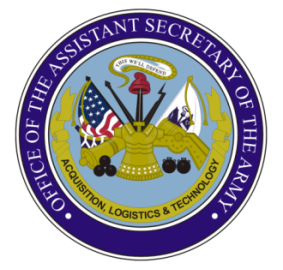
The Defense Acquisition University (DAU) is a corporate university of the United States Department of Defense offering "acquisition, technology, and logistics" (AT&L) training to military and Federal civilian staff and Federal contractors. DAU is headquartered in Fort Belvoir, Virginia, and is accredited by the American Council on Education (ACE), International Association for Continuing Education and Training (IACET) and the Council on Occupational Education (COE).
Defence Research and Development Canada is the science and technology organization of the Department of National Defence (DND), whose purpose is to provide the Canadian Armed Forces (CAF), other government departments, and public safety and national security communities with knowledge and technology.

The Defense Logistics Agency (DLA) is a combat support agency in the United States Department of Defense (DoD), with more than 26,000 civilian and military personnel throughout the world. Located in 48 states and 28 countries, DLA provides supplies to the military services and supports their acquisition of weapons, fuel, repair parts, and other materials. The agency also disposes of excess or unusable equipment through various programs.

Washington Headquarters Services (WHS) is a Department of Defense (DoD) Field Activity, created on October 1, 1977, to provide administrative and management support to multiple DoD components and military departments in the National Capital Region and beyond.
A United States defense standard, often called a military standard, "MIL-STD", "MIL-SPEC", or (informally) "MilSpecs", is used to help achieve standardization objectives by the U.S. Department of Defense.
Integrated logistic support (ILS) is a technology in the system engineering to lower a product life cycle cost and decrease demand for logistics by the maintenance system optimization to ease the product support. Although originally developed for military purposes, it is also widely used in commercial customer service organisations.

Marine Corps Systems Command (MCSC) is the acquisition command of the United States Marine Corps, made up of Marines, sailors, civilians and contractors. As the only systems command in the Marine Corps, MCSC serves as Head of Contracting Authority and exercises technical authority for all Marine Corps ground weapon and information technology programs. MCSC is headquartered at Marine Corps Base Quantico.
Logistics Support Analysis (LSA) is a structured approach to increase efficiency of maintenance and reduces the cost of providing support by preplanning all aspects of Integrated Logistics Support. A successful LSA will define those support requirements that are ideal for the system design.

The Under Secretary of Defense for Acquisition and Sustainment, or USD(A&S), is the Principal Staff Assistant (PSA) and advisor to the Secretary of Defense for all matters relating to acquisition and sustainment in the Department of Defense. This includes the DoD Acquisition System; system design and development; production; logistics and distribution; installation maintenance, management, and resilience; military construction; procurement of goods and services; material readiness; maintenance; environment and energy resilience ; utilities; business management modernization; International Armaments Cooperation, Cooperative Acquisition and International Agreements, Promoting exportability of military components to allies and partners; nuclear, chemical and biological defense programs; and nuclear command, control, and communications.
Performance-based logistics (PBL), also known as performance-based life-cycle product support, is a defense acquisition strategy for cost-effective weapon system support which has been adopted in particular by the United States Department of Defense. Rather than contracting for the acquisition of parts or services, DoD contracts to secure outcomes or results. Under PBL, the product support manager identifies product support integrator(s) (PSI) to deliver performance outcomes as defined by performance metric(s) for a system or product. The integrator often commits to this performance level at a lower cost, or increased performance at costs similar to those previously achieved under a non-PBL or transactional portfolio of product support arrangements for goods and services.
The Defence Production Sharing Agreement (DPSA) is a bilateral trade agreement between the United States and Canada that aims to balance the amount of military cross-border buying in order to avoid trade imbalances. Since its signing in 1956, it has led to a number of US companies sending military production to Canada in order to "offset" Canadian purchases of US military equipment. The Agreement has been amended on several occasions. The similar Defense Development Sharing Program organized sharing of military research and development.
Offsets are compensatory trade agreements, reciprocal trade agreements, between an exporting foreign company, or possibly a government acting as intermediary, and an importing entity. Offset agreements often involve trade in military goods and services and are alternatively called: industrial compensations, industrial cooperation, offsets, industrial and regional benefits, balances, juste retour or equilibrium, to define mechanisms more complex than counter-trade. Counter-trade can also be considered one of the many forms of defense offset, to compensate a purchasing country. The incentive for the exporter results from the conditioning of the core transaction to the acceptance of the offset obligation.

The Office of the United States Assistant Secretary of the Army for Acquisition, Logistics, and Technology (ASA(ALT) pronounced A-salt) is known as OASA(ALT). OASA(ALT) serves, when delegated, as the Army Acquisition Executive, the Senior Procurement Executive, the Science Advisor to the Secretary of the Army, and as the senior research and development official for the Department of the Army. The OASA(ALT) also has the principal responsibility for all Department of the Army matters related to logistics.
The Analysis of Alternatives (AoA) in the United States is a requirement of military acquisition policy, as controlled by the Office of Management and Budget (OMB) and the United States Department of Defense (DoD). It ensures that at least three feasible alternatives are analyzed prior to making costly investment decisions. The AoA establishes and benchmarks metrics for Cost, Schedule, Performance (CSP) and Risk (CSPR) depending on military "needs" derived from the Joint Capabilities Integration Development System process. It moves away from employing a single acquisition source to the exploration of multiple alternatives so agencies have a basis for funding the best possible projects in a rational, defensible manner considering risk and uncertainty.
The Medium Support Vehicle System (MSVS) is a designation for two types of medium capacity logistics trucks used by the Canadian Army: the Standard Military Pattern (SMP) for use by the regular forces and for overseas deployments, and the Militarized Commercial Off-The-Shelf (MilCOTS) trucks for use by the Army Reserve and for domestic purposes. The two MSVS designs were procured to replace the army's fleet of "Medium Logistics Vehicle, Wheeled" (MLVW) trucks built by Bombardier Inc. in 1982-83.
Performance based contracting (PBC), also known as performance-based logistics (PBL) or performance-based acquisition, is a product and services purchasing strategy used to achieve measurable supplier performance. A PBC approach focuses on developing strategic performance metrics and directly relating contracting payment to performance against these metrics. Common metrics include availability, reliability, maintainability, supportability and total cost of ownership. The primary means of accomplishing this are through incentivized, long-term contracts with specific and measurable levels of operational performance defined by the customer and agreed on by contracting parties. The incentivized performance measures aim to motivate the supplier to implement enhanced practices that offer improved performance and cost effective. This stands in contrast to the conventional transaction-based, or waterfall approach, where payment is related to completion of milestones and project deliverables. In PBC, since a part or the whole payment is tied to the performance of the provider and the purchaser does not get involved in the details of the process, it becomes crucial to define a clear set of requirements to the provider. Occasionally governments fail to define the requirements clearly. This leaves room for providers, either intentionally or unintentionally, to misinterpret the requirements, which creates a game like situation.
The Armed Forces of the Philippines (AFP) Modernization Act, officially designated as Republic Act No. 7898, was a Philippine law that was enacted on February 23, 1995, by President Fidel V. Ramos. It was aimed to modernize all branches of the Armed Forces of the Philippines (AFP) such as the Philippine Air Force, Philippine Navy, and the Philippine Army.

The United States Army Acquisition Corps (AAC) is the officer / NCO corps of the United States Army Acquisition Workforce (AAW), a branch which includes civilians, officers, and NCOs. The Acquisition Corps is composed of army officers who serve in acquisition, a specialized form of product development, fielding, and support and Noncommissioned Officers who specialize in Contracting, Level I Program Management and Purchasing. These officers begin their careers in the other branches of the army for eight years, after which they may elect the Acquisition branch as their career as assistant program managers (APMs), program managers (PMs), and program executive officers (PEOs). The Noncommissioned Officers (NCOs) are reclassified in the Army Acquisition NCO Corps after serving 7-10 years in their respective enlisted career management fields, and serve primarily in the Army Acquisition Career Management Field - 51 and (MOS) 51C. 4% percentage of the Army Acquisition Officers serve among the 40,000 members of the army acquisition workforce, 6% in MOS 51C - Acquisition, Logistics and Technology Contracting Noncommissioned Officer, and the remainder 90% percentage consist largely of Department of the Army civilians.
Human Systems Integration (HSI) is an interdisciplinary managerial and technical approach to developing and sustaining systems which focuses on the interfaces between humans and modern technical systems. The objective of HSI is to provide equal weight to human, hardware, and software elements of system design throughout systems engineering and lifecycle logistics management activities across the lifecycle of a system. The end goal of HSI is to optimize total system performance and minimize total ownership costs. The field of HSI integrates work from multiple human centered domains of study include training, manpower, personnel, human factors engineering, safety, occupational health, survivability and habitability.






